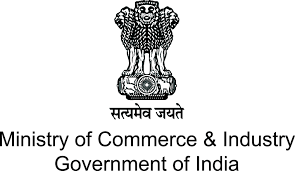
MoCI collating industry inputs for India-ASEAN FTA review
NEW DELHI : The Ministry of Commerce and Industry (MoCI) is collating inputs from exporters across sectors on non-tariff barriers, including unjust quality and technical standards and complex rules of origin, faced by them in ASEAN nations for an “effective” review of the ASEAN-India Free Trade Agreement.
The review, which is taking place at the behest of India in order to address the gaping trade deficit it has with the ten-member ASEAN, is to be concluded by 2025. “The Commerce Ministry collected inputs from various export sectors in November to frame demands for the review. The idea is to seek changes that will result in greater market access on the ground,” an official tracking the matter said.
Growing trade deficit
When the India-ASEAN FTA in goods, officially known as the ASEAN India Trade in Goods Agreement (AITIGA), was implemented in January 2010, India’s trade deficit with the region was around $7.5 billion per annum. However, the deficit widened significantly to $43.57 billion in 2022-23 with India’s exports to the region valued at $44 billion while its imports were at $87.57 billion.
“There is a growing trade deficit between India and the ASEAN after the FTA was implemented as exporters from the region have been able to take advantage of lowered tariffs but not vice versa. Non-tariff barriers in the ASEAN could be one important reason for this. In the review, India will point out the NTBs and seek a resolution,” the official said.
The ASEAN, which includes Indonesia, Malaysia, the Philippines, Singapore, Thailand, Laos, Brunei, Vietnam, Myanmar and Cambodia, accounted for 11.3 per cent of India’s global trade in 2022-23.
India experienced a worsening of the trade balance (deficit increased or surplus reduced) for 13 out of 21 sectors of product grouping, per an EXIM bank study of 2019. These include value-added sectors such as chemicals and alloys, plastics and rubber, minerals, leather, textiles, gems and jewellery. Sectors where trade deficit worsened accounted for approximately 75 per cent of India’s exports to ASEAN.
Trade barriers
In earlier interactions with the ASEAN, Commerce & Industry Minister Shri Piyush Goyal referred to the restrictive barriers on Indian exports to the ASEAN region, particularly in the agriculture and automobile sectors. He had pointed out that Indian exports had been impeded by non-reciprocity in FTA concessions, NTBs, import regulations and quotas & export taxes from ASEAN countries.
Complexity in rules of origin (which determine the level of value addition needed in a partner country for availing FTA duty concessions) has proved to be a considerable setback.
“The rules of origin for the India-ASEAN FTA are strict. This makes it difficult for Indian exporters to export products to ASEAN countries and benefit from the tariff reductions under the FTA. On the other hand, there are a number of alleged instances where merchandise is being re-routed from China, via ASEAN countries with minimum value addition, thereby misusing the India-ASEAN FTA,” according to a review by the Trade Promotion Council of India.
